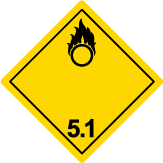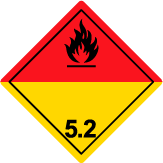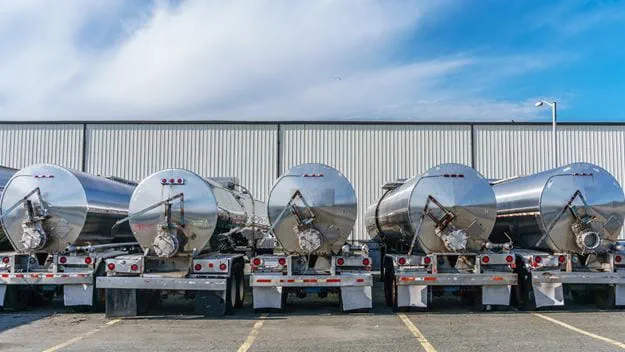
Hazard class 5.1: Oxidizing substances
Class 5.1 are substances which, while in themselves not necessarily combustible, may, generally by yielding oxygen, cause or contribute to the combustion of other materials and articles containing such substances. Oxidizing substances can be both a solid or liquid form.
Packing groups
Class 5.1 has been assigned a packing group which indicates the degree of danger.Packing Group I: Substances presenting high danger
Packing Group II: Substances presenting medium danger
Packing Group III: Substances presenting low danger
Examples of commonly transported oxidizing substances
Ammonium nitrate, chlorates, nitrates, nitrites, peroxides, calcium hypochlorite, calcium nitrate, calcium peroxide, hydrogen peroxide.
Hazard class 5.2: Organic peroxides
Substances of Class 5.2 are sub-divided into:
P1: Organic peroxides, not requiring temperature control
P2: Organic peroxides, requiring temperature control
Organic peroxides are liable to exothermic decomposition at normal or elevated temperatures. The decomposition can be initiated by heat, contact with impurities (e.g., acids, heavy metal compounds, amines), friction or impact. The rate of decomposition increases with temperature and varies with the organic peroxide formulation. Decomposition may result in the evolution of harmful, or flammable, gases, or vapors. For certain organic peroxides the temperature shall be controlled during transport. Some organic peroxides may decompose explosively, particularly if confined. This characteristic may be modified by the addition of a diluting agent or using the appropriate packaging. Many organic peroxides burn vigorously and contact with the eyes and skin is to be avoided. Some organic peroxides will cause serious eye injuries, even after brief contact, or will be corrosive to the skin.
Packing Groups
Class 5.2 dangerous goods have not been assigned any packing groups.You may also be interested in
Any questions?
Our experts are ready to help. Get in touch and we'll find the solution you need.




